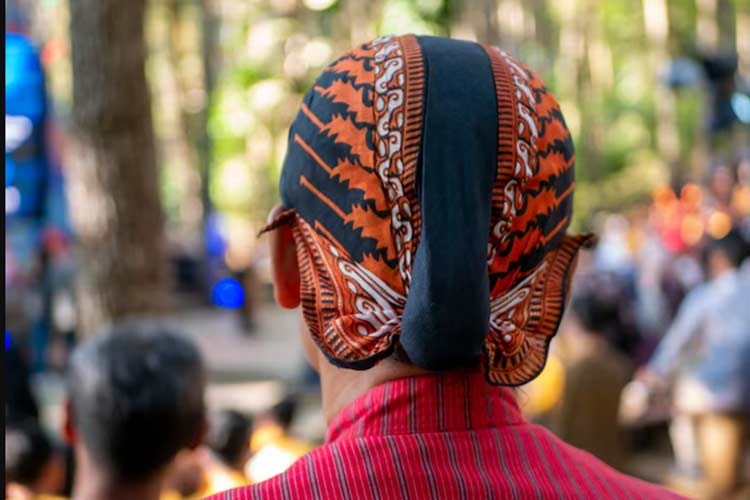Blangkon: The Cultural Significance of the Traditional Javanese Headdress

TIMESINDONESIA, JAKARTA – Blangkon is a traditional Javanese headdress, an essential piece of cultural attire that holds deep historical and social significance in Indonesian culture, particularly among the Javanese people. This intricately crafted headgear not only serves as a symbol of regional identity but also embodies the rich traditions and artistry of Java.
Blangkon has its roots deeply embedded in Javanese history and culture. It is believed to have been influenced by Hindu and Islamic cultures, which played significant roles in shaping the cultural landscape of Indonesia.
Advertisement
The headdress itself evolved over centuries, with its earliest forms seen in ancient Javanese statues and reliefs depicting nobility and warriors. Over time, Blangkon became a staple of traditional Javanese attire, especially for men.
Design and Construction
A Blangkon is made from batik cloth, a fabric renowned for its intricate patterns and vibrant colors. The process of creating a Blangkon involves several meticulous steps:
1. Batik Making
The fabric is dyed using the traditional batik technique, which involves applying wax to the cloth to create detailed patterns before dyeing it. This process can be repeated multiple times to achieve the desired complexity and coloration.
2. Cutting and Stitching
Once the batik cloth is ready, it is cut and sewn into the specific shape required for the Blangkon. The design is carefully crafted to fit snugly on the head, with precise folds and stitches that define its unique form.
3. Shaping
The final step involves shaping the Blangkon to ensure it maintains its structure. This often includes adding a stiff inner lining or other supportive materials.
There are different styles of Blangkon, each with distinct characteristics based on the region and social context. The most well-known types are the Solo (Surakarta) and Yogyakarta styles, each reflecting the unique cultural attributes of these areas.
Cultural Significance
Blangkon is more than just a fashion accessory; it carries profound cultural meanings. Traditionally, it is worn by Javanese men during important ceremonies and events such as weddings, traditional dances, and other cultural festivals.
The headdress signifies respect for heritage and is often seen as a marker of one’s social and cultural identity.
1. Symbol of Nobility and Virtue
Historically, the Blangkon was associated with nobility and the warrior class. Wearing a Blangkon is a symbol of dignity, honor, and virtue.
2. Spiritual Protection
In Javanese belief, the Blangkon also provides spiritual protection. It is thought to ward off negative energies and bring good fortune to the wearer.
3. Artistic Expression
Each Blangkon is a work of art, reflecting the intricate craftsmanship and artistic expression of its maker. The patterns and designs on the batik cloth often tell stories or symbolize philosophical concepts.
Modern Day Relevance
While Blangkon retains its traditional significance, it has also found a place in contemporary fashion and culture. Many Indonesians and those with Javanese heritage wear it to express pride in their cultural roots. It is also worn by cultural performers and can be seen in various artistic representations, such as in theater, dance, and music performances.
In recent years, the Blangkon has gained international attention as part of the broader appreciation of Indonesian batik. As the world becomes more interconnected, the Blangkon stands as a testament to the rich cultural heritage of Indonesia and the enduring legacy of Javanese traditions.
The Blangkon is a powerful symbol of Javanese identity and culture, representing a blend of historical depth, artistic craftsmanship, and cultural significance. Whether worn during traditional ceremonies or appreciated as a piece of cultural art, the Blangkon remains an enduring emblem of Indonesia’s rich heritage. Its intricate designs and profound meanings continue to fascinate and inspire both within Indonesia and beyond.(*)
**) Ikuti berita terbaru TIMES Indonesia di Google News klik link ini dan jangan lupa di follow.
| Editor | : Khodijah Siti |
| Publisher | : Ahmad Rizki Mubarok |

